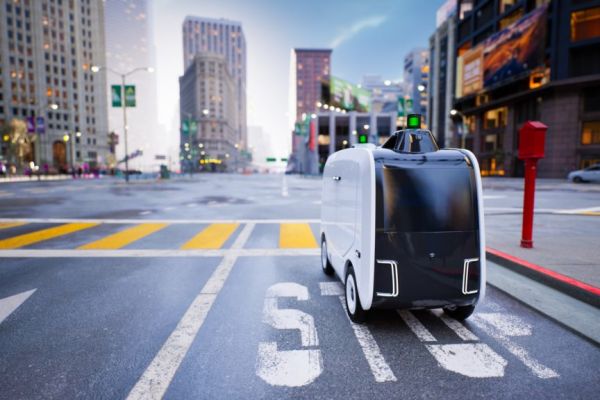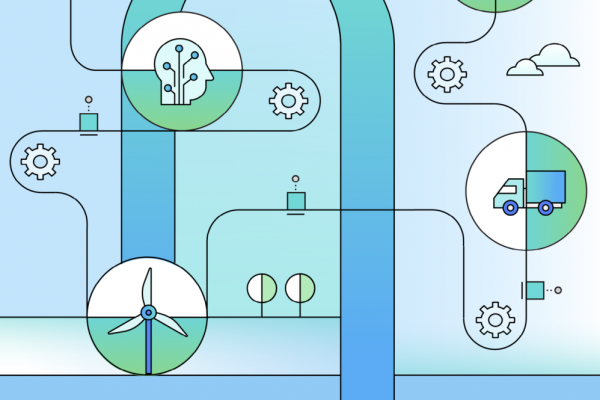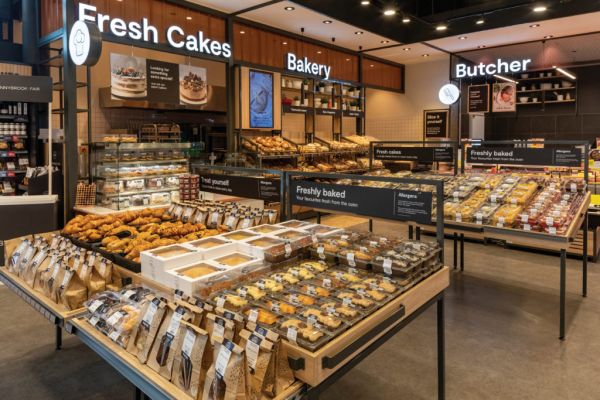Over the past few years, there has been a significant rise in demand for driverless delivery systems for last-mile connectivity, Pooja Sharma writes.
Delivery of goods has been identified as a key application for driverless technologies as they continue to evolve from their nascent stages of development. This theme has been further pushed by the COVID-19 pandemic, leaving delivery and logistics systems stifled.
A shortfall of personnel for delivery services, attributed to pandemic-induced lockdowns and growing customer desire for contactless transactions has positively impacted driverless delivery services.
In addition, a number of retailers transitioning toward automating their delivery systems have further accentuated this trend, propelling the demand for autonomous last-mile delivery systems.
Surveys reveal that a significant share of enterprises globally has been either investing or planning to invest in technologies such as autonomous trucks or delivery drones.
For example, in February 2023, Kiwibot, a Colombian-owned food delivery startup, secured a US$ 10 million (€9.27 million) financing partnership with Kineo Finance, an asset financing group, bringing its total funding amount to US$ 24 million (€22.2 million). The financing agreement aims to disrupt the delivery-as-a-service (DaaS) industry, expanding Kiwibot’s robotic fleet. The funds are expected to help the company suffice its manufacturing and scaling requirements.
Booming E-commerce Industry
The global e-commerce sector has been on the rise for quite some time, attributed to the commendable growth in the penetration of internet and web-based services and a noticeable surge in smartphone users worldwide – according to the US Census Bureau, total e-commerce sales in the US crossed $1.03 trillion (€960 million) in 2022, recording a 7.7% uptick from 2021.
The latest data unveiled by the International Telecommunication Union depicts a sizeable growth in internet users globally during the pandemic, causing a massive boom in the autonomous last-mile delivery industry.
The report quotes that an estimated 54% of the world population – or 4.1 billion people worldwide – had internet access in 2019. This number surged to 63% or 4.9 billion people in 2021.
These optimistic scenarios point toward an anticipated boom in the number of online shoppers globally, boosting the demand for efficient and reliable services and solutions to ensure the on-time delivery of products. This, in consequence, will create a favourable growth outlook for the autonomous last-mile delivery market.
Changing The Face Of Global Logistics
Technological innovations in autonomous vehicles play a pivotal role in accelerating the adoption of autonomous last-mile delivery services across the e-commerce industry. Delivery of packages by drones and other autonomous vehicles has become commonplace, thanks to the penetration of cutting-edge technologies, such as artificial intelligence (AI), sensing algorithms, and lidar.
A number of firms offering drone delivery services, such as Walmart, Amazon, JD.com, and Alibaba, have introduced innovations and undertaken investments to deliver packages over long distances without human intervention.
For instance, in November 2021, Walmart and Zipline, a California-based drone company, partnered to kickstart using drones for transporting items such as thermometers, cough medicine, and other health products to its shoppers within a 50-mile radius.
Europe To Emerge As A Potential Hub
European economies have seen inflation reach a 40-year high in recent months, along with soaring energy costs, while an acute truck driver shortage is further stressing the already burdened supply chain.
In the UK, for example, the Road Haulage Association briefed a shortfall of nearly 100,000 HGV drivers – recent estimates place this figure nearer to 70,000. Similarly, the Annual Population Survey depicts a total decrease of 42,000 UK nationals employed as HGV drivers since June 2017.
These estimates, in addition to the positive outlook of the e-commerce sector in the region, have accentuated the need to insinuate efficient logistic solutions to ensure that all delivery timelines are duly met.
Established firms, as well as startups, are working toward adding value propositions and improving technology in the logistics sector.
For instance, in March 2023, Clevon, an autonomous delivery vehicles innovator based in Estonia, and ZF, a massive German automotive technology firm, collaborated to bring together ZF Scalar, an AI-based real-time fleet orchestration platform, and the former's Autonomous Robotic Carrier technology. The two companies joined forces to accelerate the deployment of integrated and efficient next-gen last-mile delivery services using driverless carriers in urban environments.
Elsewhere, some organisations are adopting Robot as a Service (RaaS) model for better fleet management. Since autonomous delivery vehicles are considered the future of transportation, their growing adoption would transform the dynamics of the logistics market and streamline last-mile delivery across numerous industries, thus supporting market growth.
© 2023 European Supermarket Magazine – your source for the latest supply chain news. Article by Pooja Sharma. Click subscribe to sign up to ESM: European Supermarket Magazine.














